
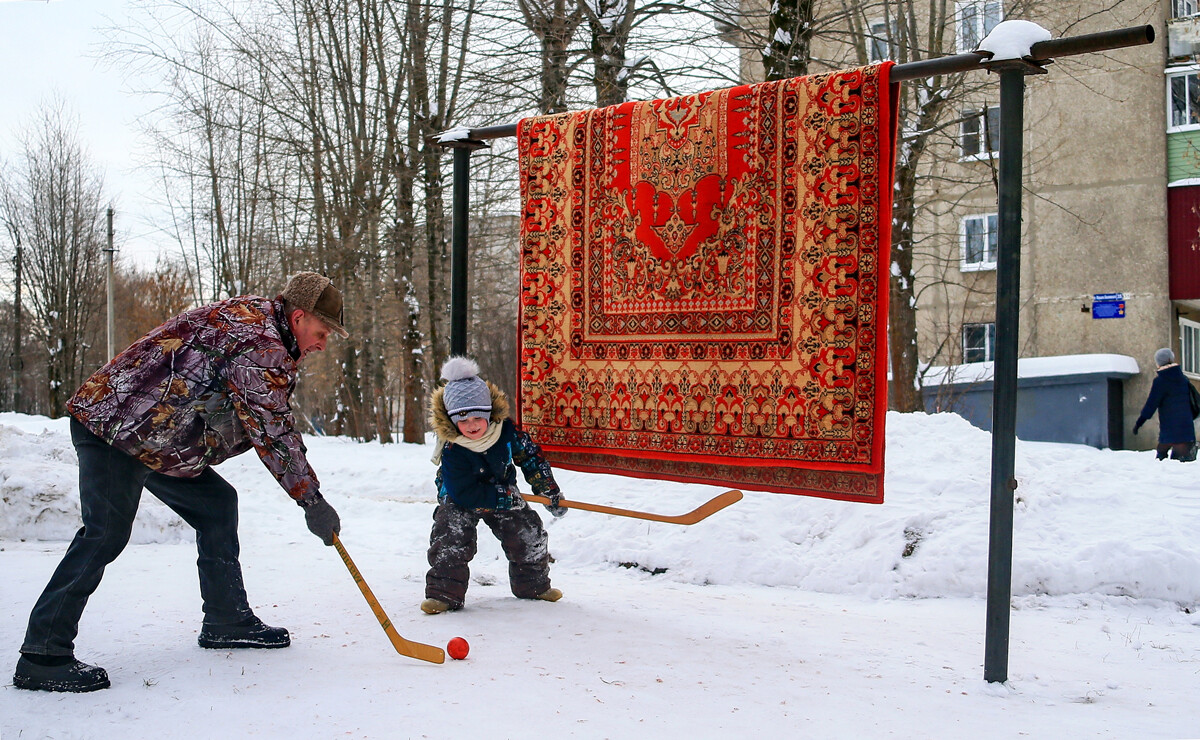
The Soviet obsession with rugs (which we discuss at length here) necessitated great care. These things were dust collectors not only on the floor, but as wall ornaments, as well - so, had to be beaten. Special constructions would be seen not too far from children’s playgrounds - a sort of metal clothesline (many remain to this day). Winters were especially convenient for cleaning rugs, as you could get snow in on the action.
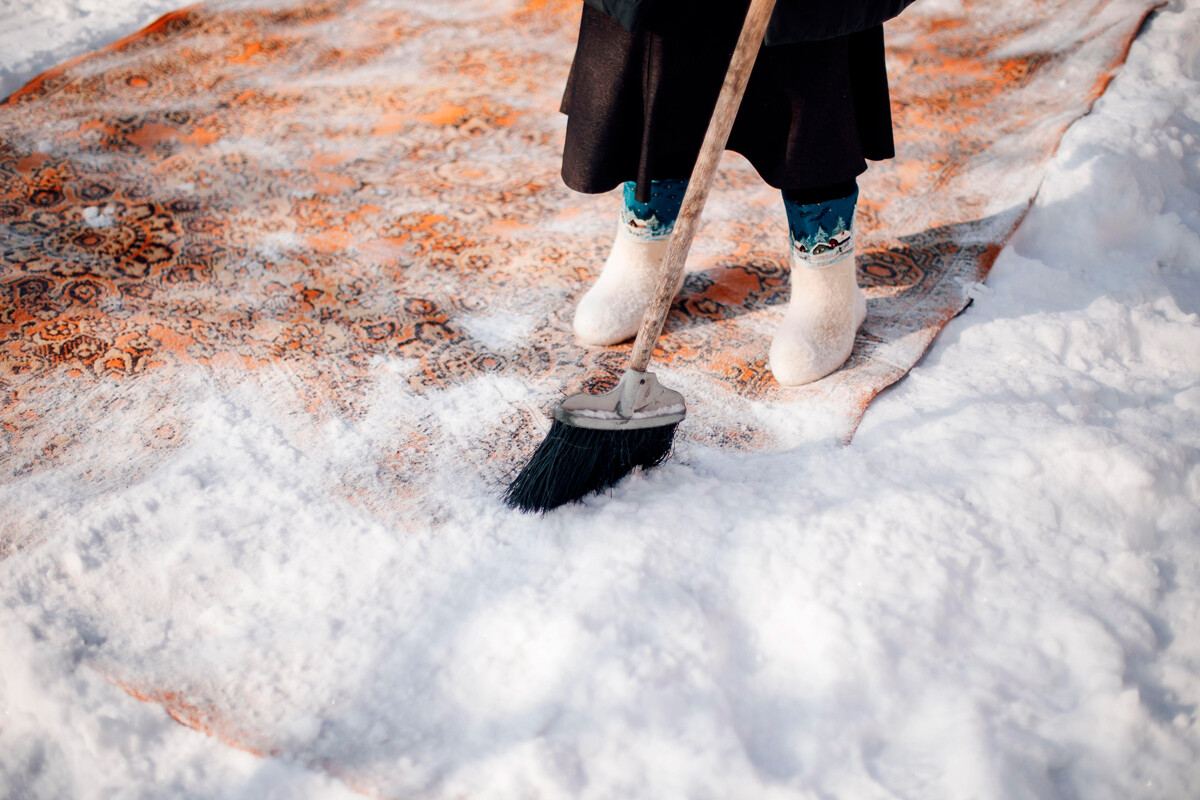
Years later, those same carpets continue service in their ex-Soviet apartments and the cleaning method of beating the living crap out of the rug in the fresh winter air, likewise, carries on.
This strange tradition was first explained by economic necessity: the paint would reach to around the height of an adult person’s face, or a bit lower, which was enough to protect the walls from dirt and not get dirty with lime paint in the process.
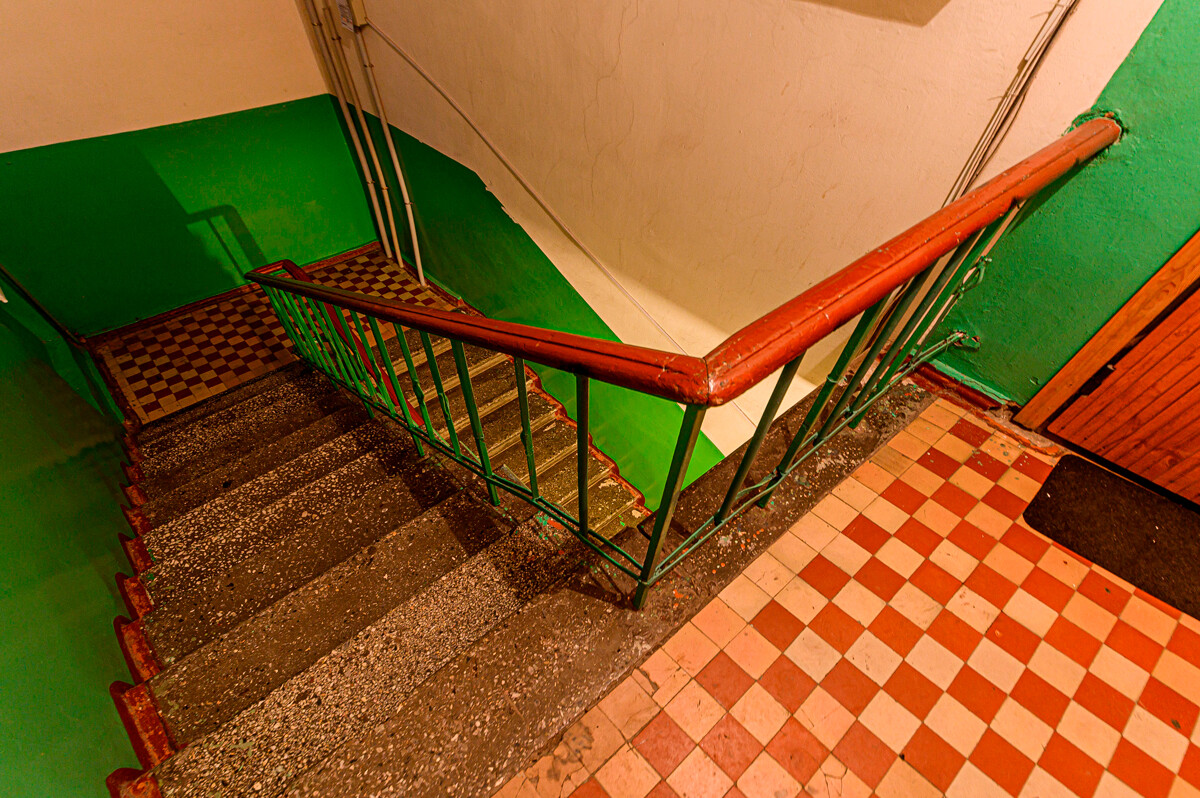
This was a practice observed more in public space: hospitals, entrances, houses of culture, eateries, bathrooms and so on. Green and blue were the colors of choice: the two were always sold, as the pigments were in high demand in other spheres, such as the automotive and defense industries. Moreover, it was believed that these colors fared the best at concealing vandalism, manufacturing mistakes and other irregularities.
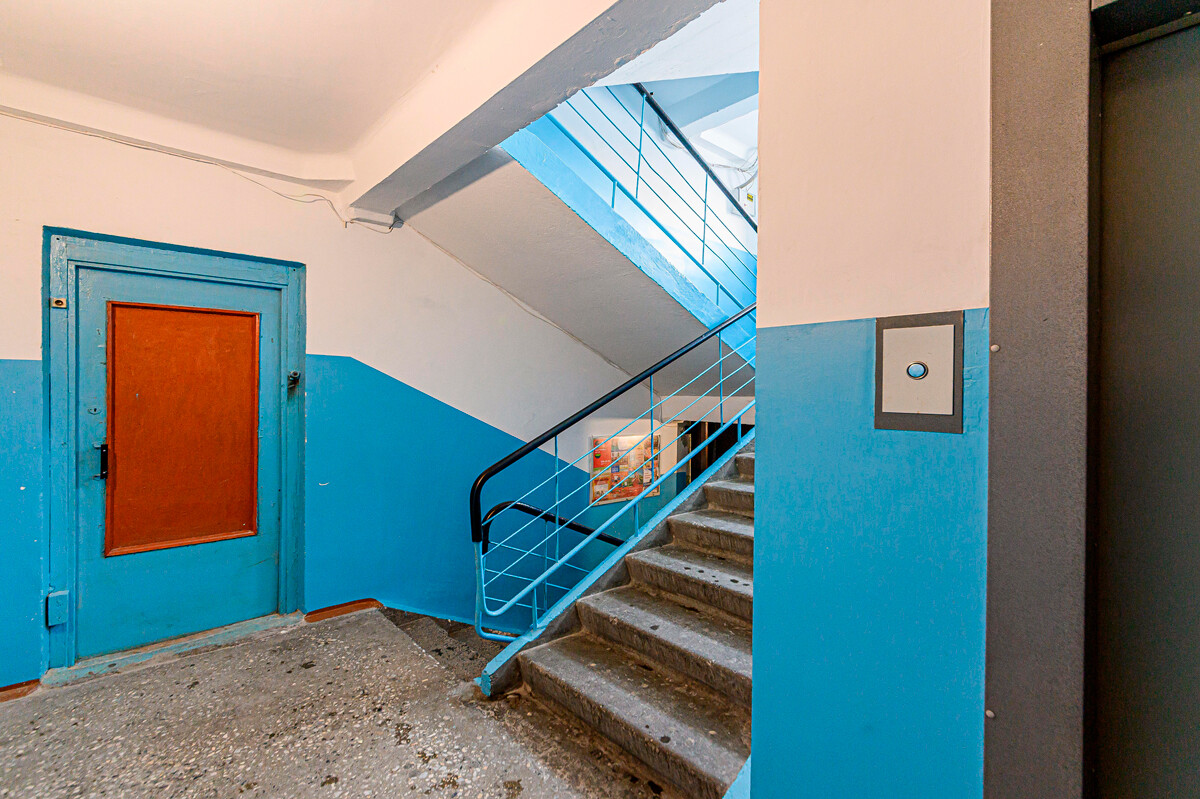
Thankfully, there are no such restrictions today. But building entrances and other places at times do pop up in swamp green. Tenants actually have the ability to decide through the building council the color scheme they’d like to see, but in 90 percent of cases, we see the green, because few ever use the free privilege. And it’s always half the wall, as custom dictates.
Crystal or china dishes, suffocating in a glass cupboard for all to see for most of the year is a typical story for a Soviet household. The fancy kitchenware used to be impossible to obtain, so was kept around only for special occasions, usually when guests were invited. The rest of the time, the family used simple plates - eating out of the “beautiful” ones was unthinkable.
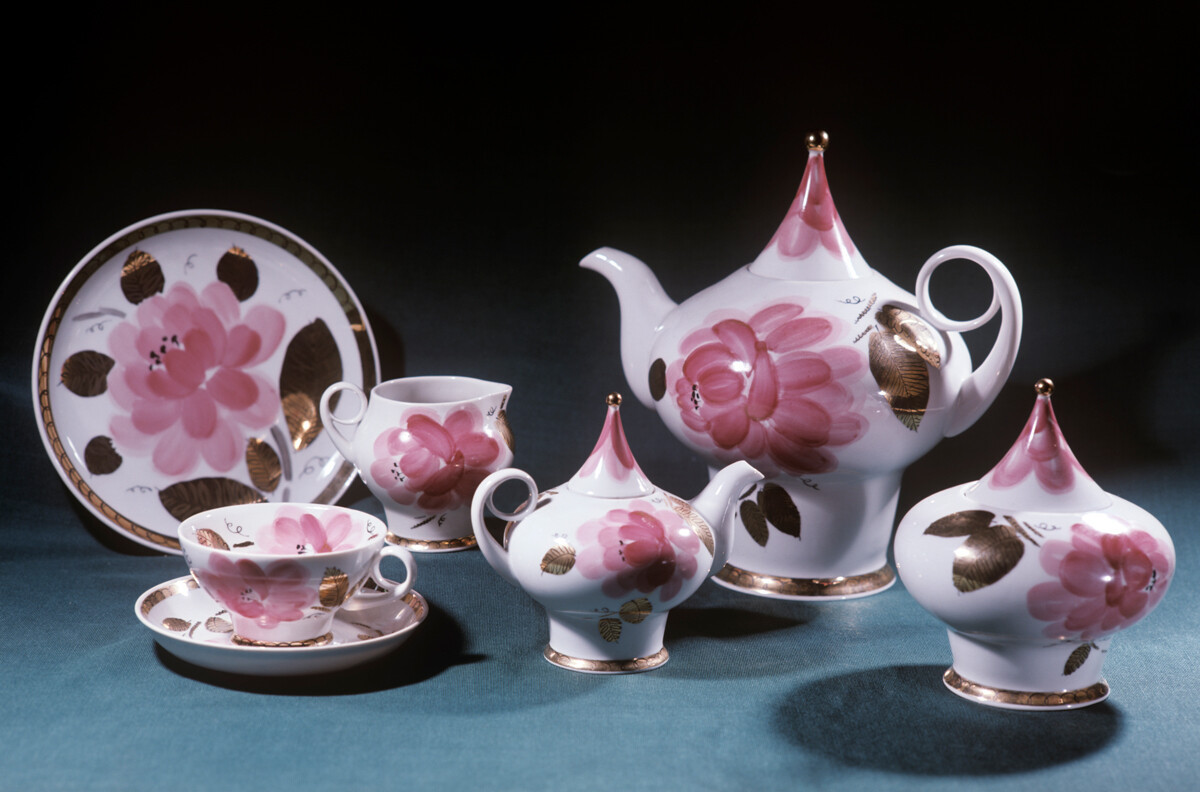
The habit is, admittedly, alive to this day, even in times of no deficit and quite different status symbols. This “celebratory” set can sit there for years on end, together with grandma’s crystal - which is a whole separate thing people can’t bring themselves to part with or even touch.
“The house of exemplary living culture” was a sort of unspoken contest for who in the USSR had the neatest-looking public courtyard. Winning buildings were awarded congratulatory ‘exemplary housekeeping’ banners - a hotly contested honor that couldn’t be won with bribery - only hard work and creativity.
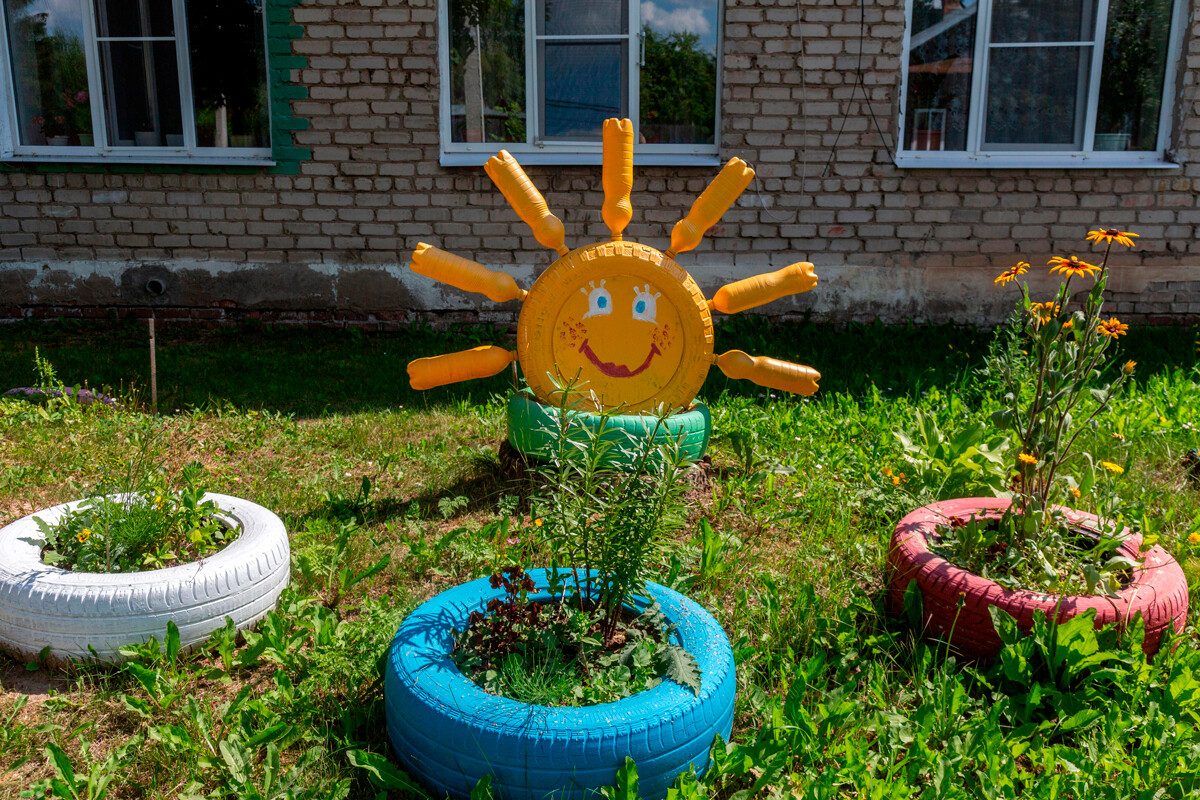
Tenants, among other things, would try to decorate their courtyards in their own particular fashion and with whatever happened to be lying about the place.

Everything went into the pot - from canisters and tires to planks nailed together into some shape. These apparent ‘storks’, ‘swans’ and crocodiles’ have proven to be very difficult to eradicate. Even fines for utilizing former car tires for courtyard beautification purposes don’t deter people from trying (apparently, it’s a Class 4 hazard, whatever that means).
The same went for building entrances - they were usually kitted out with anything one could find: flowers on the window sills and around flights of stairs; there were also chairs and armchairs in curious places between floors… yes, sometimes even carpets.
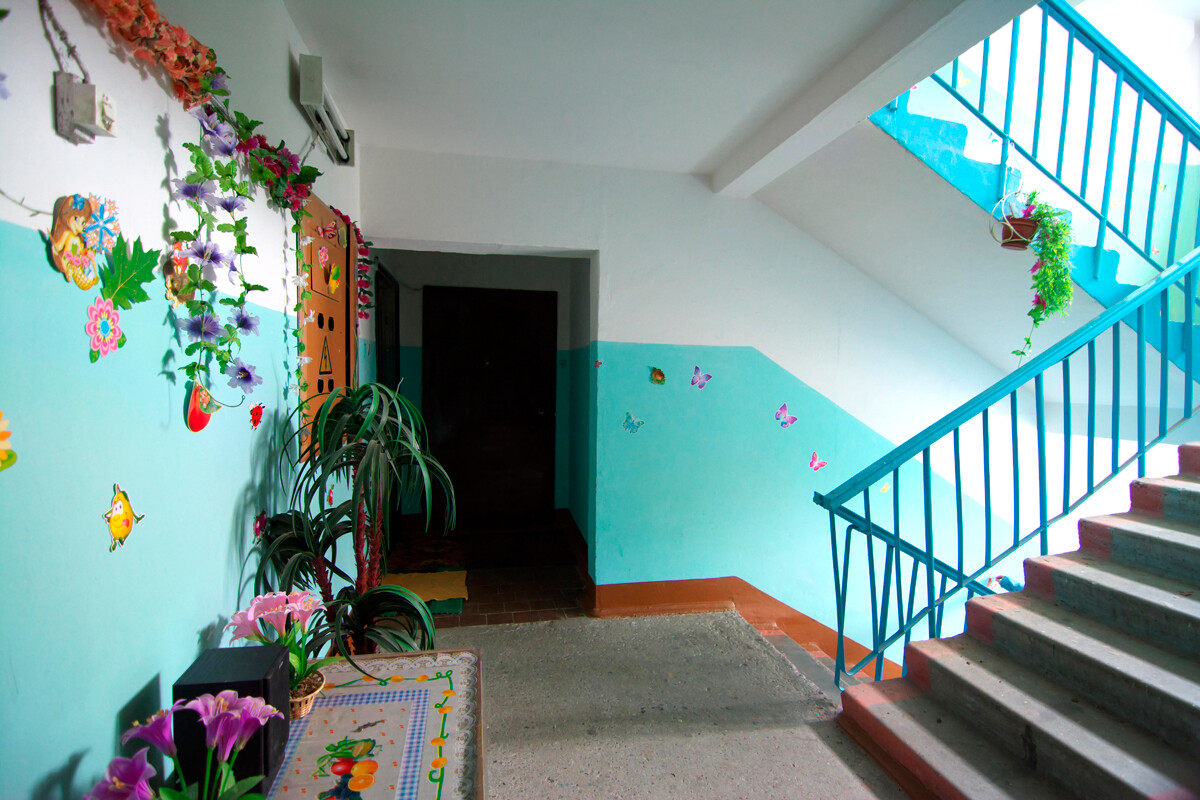
Below are some modern building entrances in Sakha Republic. As you can see, the trend of sprucing up the communal space is very much alive there.

Typical Soviet living couldn’t be called spacious by any stretch, so the fight for every centimeter was always on. Meanwhile, people still had to store seasonal things somewhere, including skis, winter tires and other non-clothing items. The balcony essentially turned into a storage space, which was stuffed the entire year. The phrase “put it away on the balcony” is a common one even to this day.
‘Subbotniks’ - where the entire nation does something useful for the community on a Saturday - became a thing from the start of Soviet rule as one of the facets of a “truly socialist state”. It existed both at the level of the factory floor (in April, when Lenin's birthday, all the workers worked that day for free), as well as the country, in general. Tending to one’s territory on a Saturday used to be a socially commendable action. And, at first, it ran on the excitement of social enthusiasm. But, soon, they had to make it mandatory.
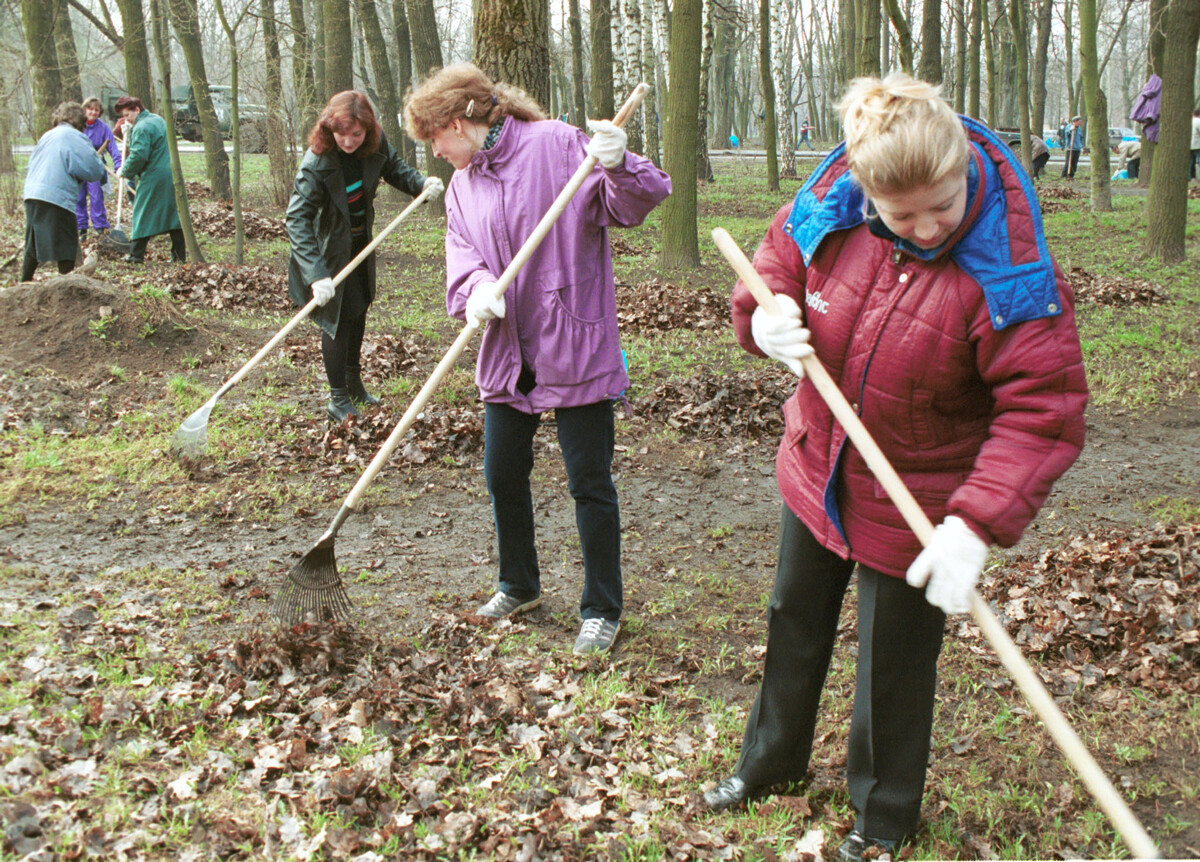
The USSR is no more, but the habit of collective communal chores lives on. Although that, too, is on its last breath: scialist ideology is no longer a trigger for most people and they expect the work to be done by municipal services and companies.
If using any of Russia Beyond's content, partly or in full, always provide an active hyperlink to the original material.
Subscribe
to our newsletter!
Get the week's best stories straight to your inbox